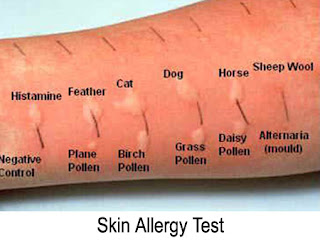Allergy Revision Notes
Allergy – Inappropriate immune response to normally harmless allergen.
Allergy – Inappropriate immune response to normally harmless allergen.
Allergen – Foreign particles which produce an IgE-mediated hypersensitivity reaction in sensitive individuals.
Atopy – genetic predisposition to exaggerated immune responses.
- Individuals are said to become ‘sensitized’ after initial exposure to antigen (allowing the development of antigen-specific IgE antibodies), and subsequent exposure will result in an allergic reaction.
- Antigens can enter the body via the skin or the respiratory or gastrointestinal mucosa.
- Allergens which enter the body bind to antigen-presenting cells which allow exposure to antigen-specific Th2 cells. These cells produce cytokines which activate mast cells which subsequently release histamine, leukotrienes and prostaglandins.
- Histamine is responsible for local vessel dilation and increased permeability.
- Activated Th2 cells also stimulate the production of allergen-specific IgE from B-cells. These antibodies are able to stimulate mast cell degranulation directly once bound to antigen.
- Prolonged or repeated allergen exposure causes eosinophil activation which enhances local inflammation.

Epidemiology
- 30% of the population develop an allergic disorder.
- The most common allergens include house dust; dust mite faeces; animal dander; pollen (grass or tree); moulds and certain foods.
- Allergy is more likely if the exposure occurs early, and is likely to improve with age.
- There is also a genetic component: if one parent affected the risk is 25-40%, if both parents are affected, the risk increases to 50-75%.
Signs and symptoms will depend on the site of exposure, dose and individual.
Symptoms may include:
o Urticarial or eczematous rash,
o Asthma,
o Rhinitis,
o Conjunctivitis,
o Diarrhoea and vomiting,
o Anaphylaxis.
Diagnosis
- A careful history may help identify trigger allergens and provide information about attack frequency and changes over time.
- Family history.
- Skin prick test - exposure to standardised allergen solution through forearm skin prick. A wheal >2mm larger than the negative (saline) control is a positive result.
Treatment
- Avoidance of allergen if possible.
- Topical treatments: sodium cromoglicate (nasal spray/eye-drops) – stabilises mast cells to prevent degranulation; topical steroids – reduce vessel permeability and cytokine synthesis; emollient cream – reduce itching and water loss through damaged skin; bronchodilators.
- Oral antihisatamines or steroids.
- Desensitisation therapy can be used in upper airway allergies if symptoms are not controlled on maximal medical therapy.
Notes by Nicole McGrath

EmoticonEmoticon